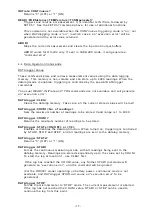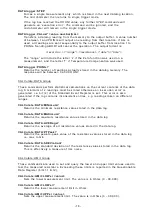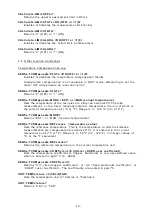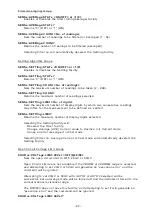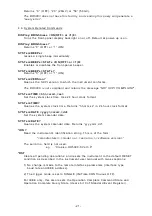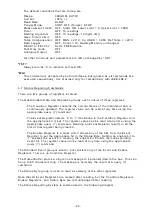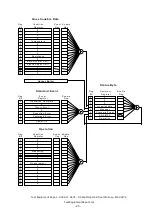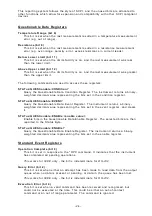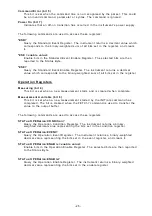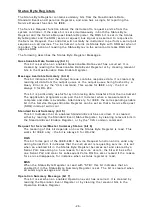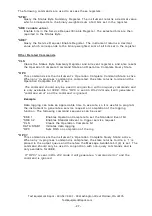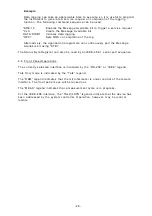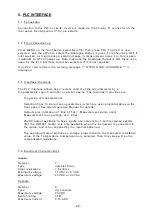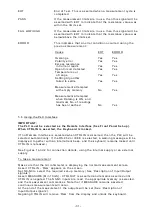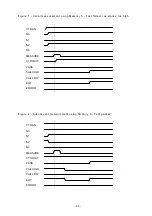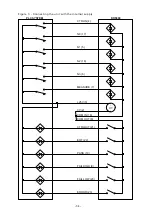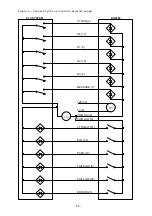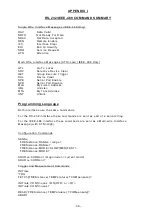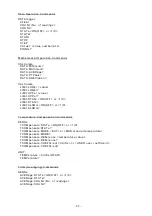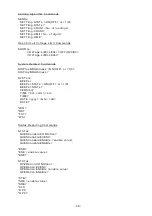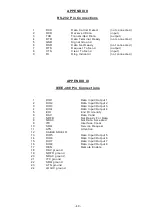
- 31 -
EOT
End of Test. This is asserted when a measurement cycle is
completed.
PASS
If the measurement limits are in use, then this signal will be
asserted with EOT to indicate that the resistance value was
within the limits set.
FAIL LOW/HIGH
If the measurement limits are in use, then this signal will be
asserted with EOT to indicate that the resistance value was
below/above the limits set.
ERROR
This indicates that an error condition occurred during the
previous measurement:
Cause
EOT
ERROR
Overange
Yes
Yes
Polarity error
Yes
Yes
Excess resistance
in Current leads
Yes
Yes
Open Circuit detected
Yes
Yes
Temperature out
of range
Yes
Yes
Settling Algorithm
failed to settle
Yes
Yes
Measurement attempted
with empty memory
No
Yes
Measurement attempted
when Datalog is ON, and
maximum No. of readings
has been reached
No
Yes
5.6 Using the PLC Interface
IMPORTANT:
The PLC must be selected as the Remote Interface (See Front Panel Set-up).
When CTRLIN is asserted, the Keyboard is locked.
(If no Remote Interface is selected when CTRLIN is asserted, then the PLC will be
selected automatically. If the RS-232 or IEEE is selected, a warning message will be
displayed, together with an intermittent beep, and the keyboard remains locked until
CTRLIN is released.)
See Figures 1 and 2 for connection details, using the internal supply or an external
supply.
To take a measurement
Make sure that the microhmmeter is displaying the normal measurement screen.
Assert CTRLIN - ‘Rem’ appears on the screen.
Set N0-N3 to select the required set-up memory (See ‘Description of Input/Output
signals’).
Assert MEASURE (Min 10mS) - CTRLOU T is asserted and remains asserted until
CTRLIN is negated. The N0-N3 inputs are read, the appropriate memory is selected,
and the measurement commences. Note that if MEASURE remains asserted,
continuous measurements will occur.
At the end of the measurement, the outputs will be set (See ‘Description of
Input/Output signals’).
Negating CTRLIN will remove ‘Rem’ from the display and unlock the keyboard.

